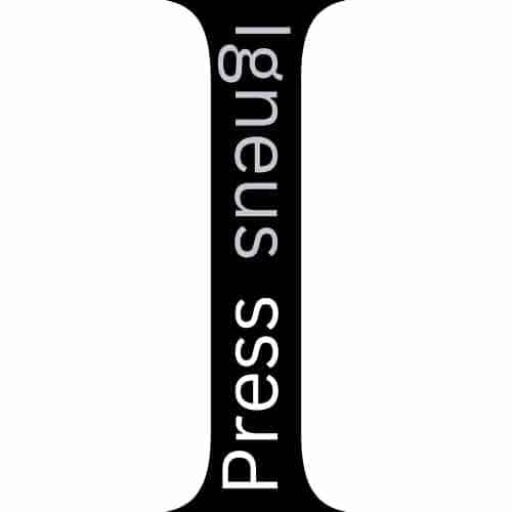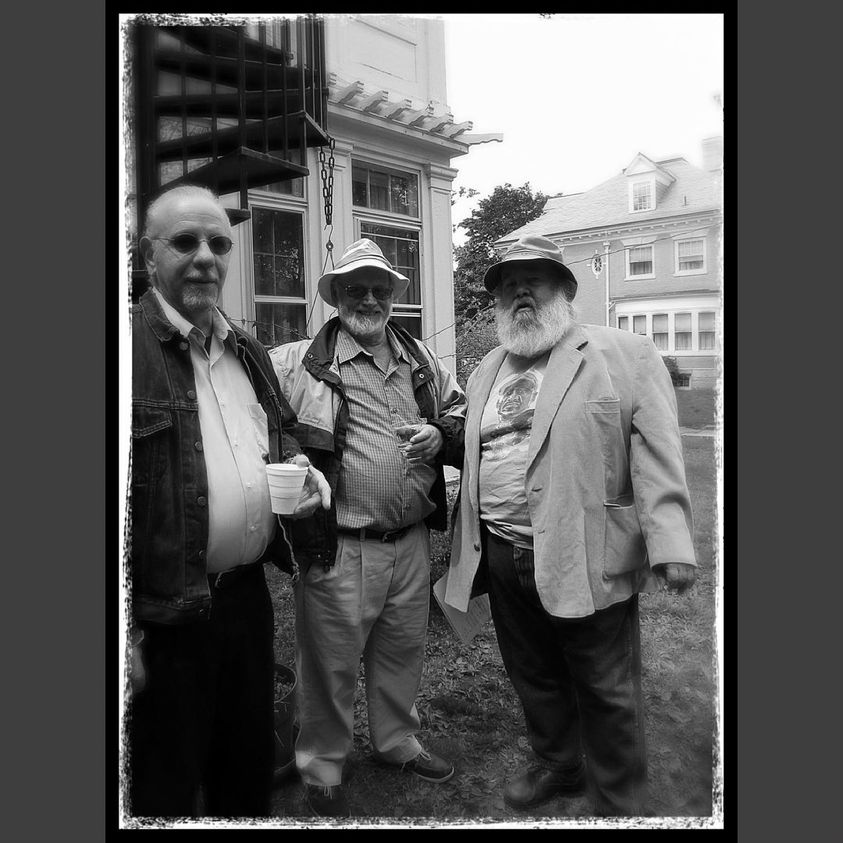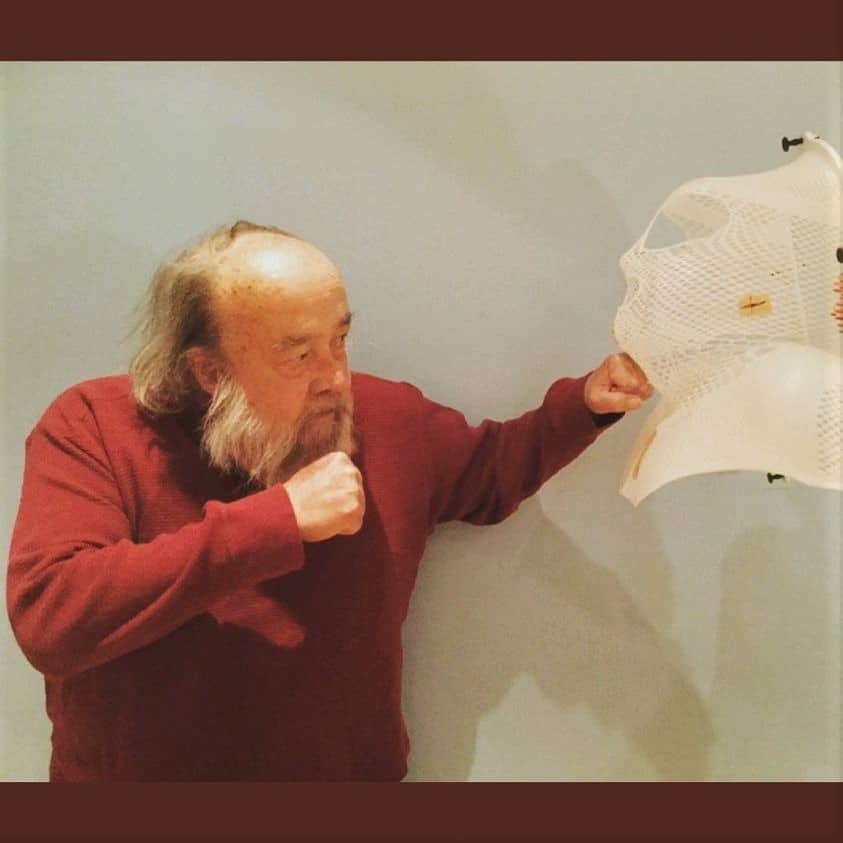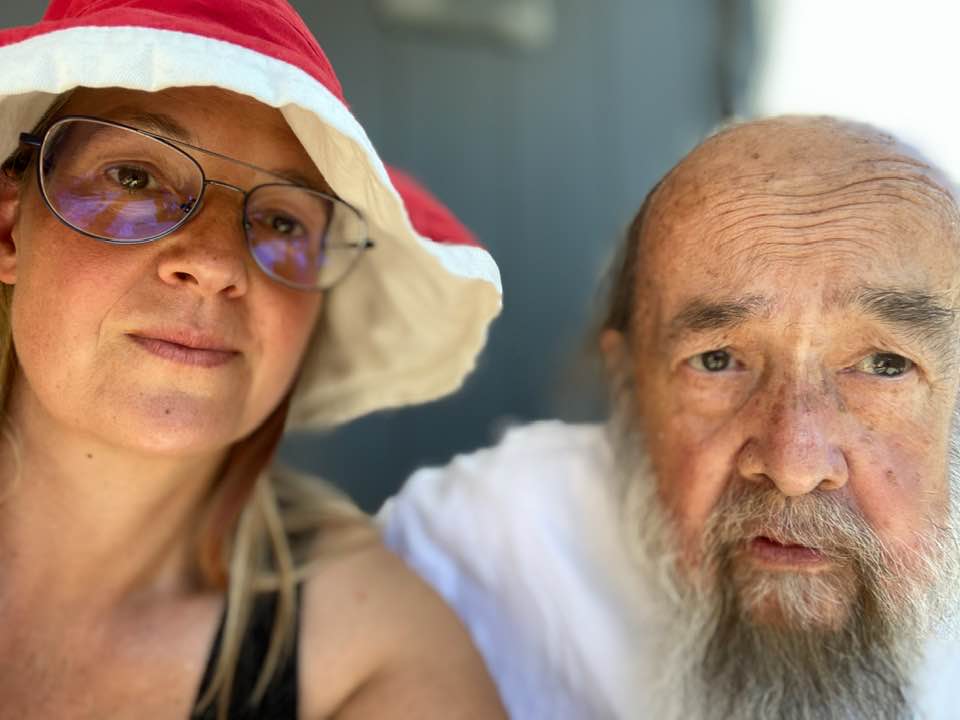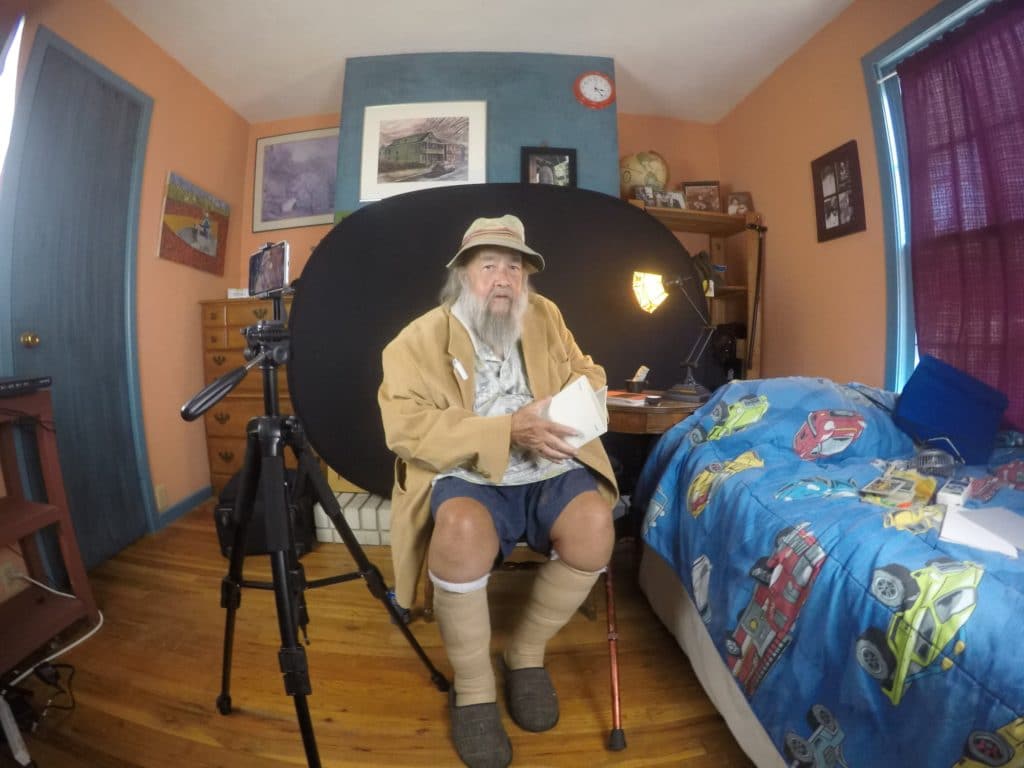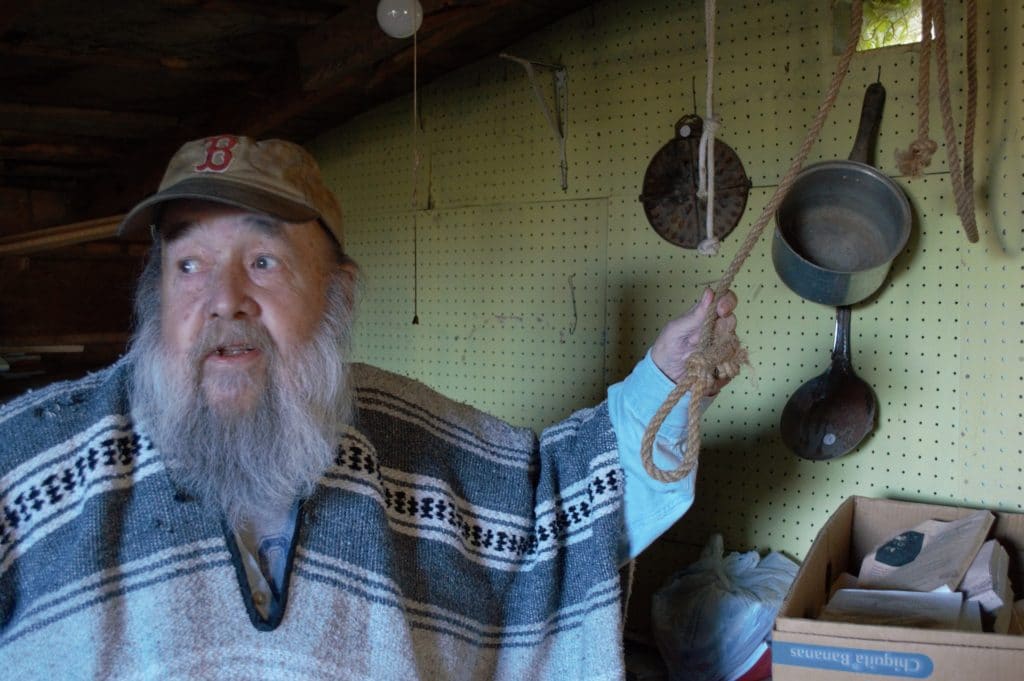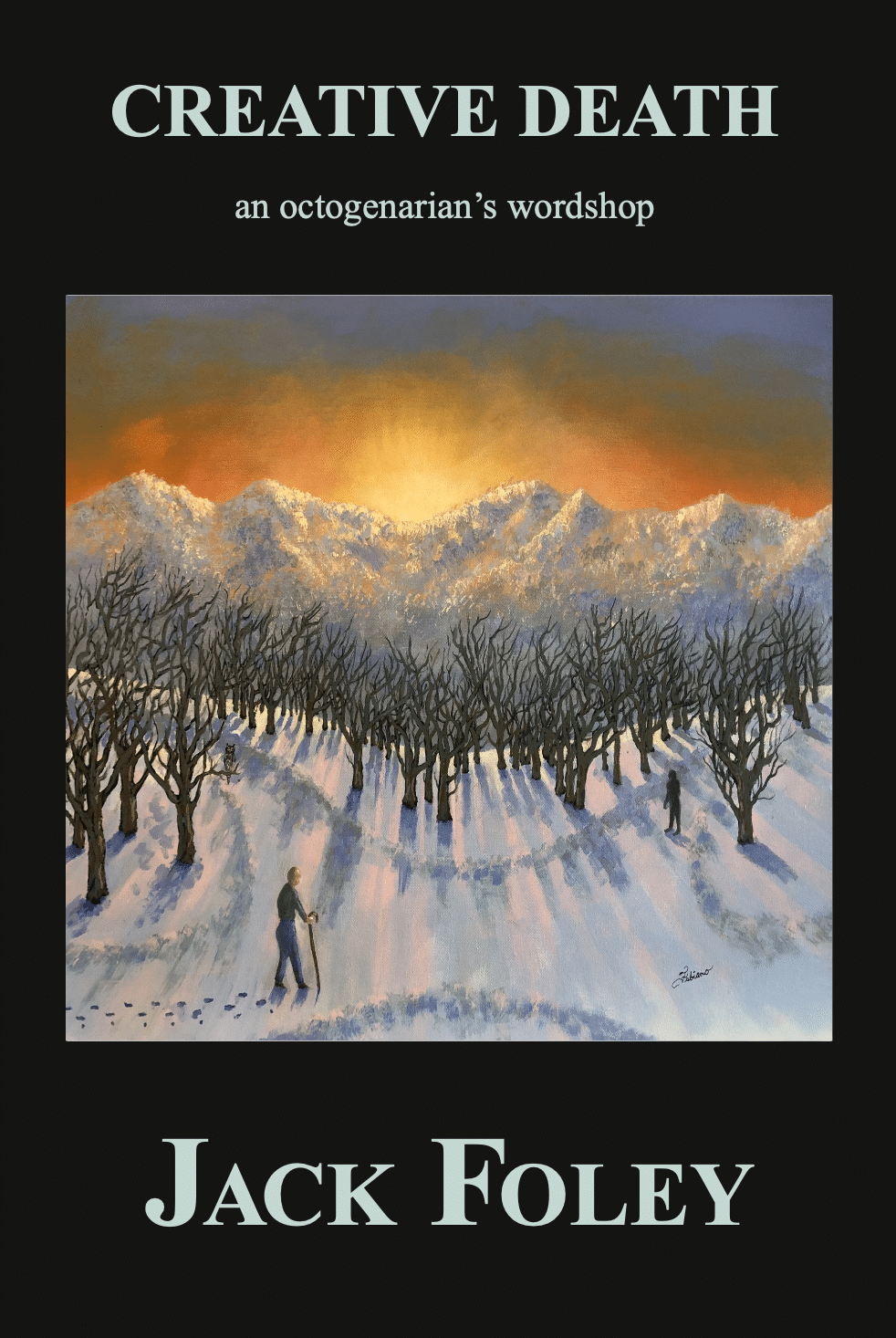
Jack Foley, Creative Death (1st Edition) (Buy this book)
Review by deb Ewing
Jack Foley believes that “At the heart of Western poetry is a split, a confusion, a multi-media situation which is never resolved but which remains in a continual, and at times enormously creative, state of tension.” Please take a moment to internalize this.
Poetry’s history begins as an aural/oral art. It’s evolved to include work that cannot be read aloud, or which loses some context in spoken form. What is poetry? Sometimes I say it’s math; almost always I say it’s distillation.
In the process of formatting this manuscript, the author and I had many peripheral conversations. I’m in a position to understand how this book distills a lifetime – or perhaps several – of knowledge in a way that only poetry can do. But remember what Jack said: there’s a tension, unresolvable.
Putting all that together, I realized that I’ve gotta find another way into people’s brains to get my message across. The door through the eyes is closed. And so I started making music.
– Peter Harper, artist & songwriter
And yet Jack Foley has taken great care in arranging his words in two dimensions.
Creative Death is many things: it’s a compendium of one man’s lifetime of work; perhaps more importantly, it’s a guidebook on how to find inspiration. Or even how to find mentorship – a part of the creative process that’s too often overlooked.
I’m captivated by Foley’s many references to classic musical works. ‘Pairings 3: History’ gets to the gist of another debate integral to my daily life: poetry vs. song lyrics. I’m still not sure whether or how much Jack Foley and I agree on this topic, but the discussion has been invigorating. Invigoration is crucial to creativity. Crucial. Say that one more time, aloud, please.
The question “who is your audience” is eternal buggery: The answer is a shifting mass which self-identifies like Venn diagrams free to re-evaluate at will and random. I often refer to this populace as “these clowns,” with love and gratitude because I am one of these clowns. What the audience wants, ultimately, is to connect – by connection we mean mirroring – they want to see their own perplexion, maybe hoping we have an answer for them.
In ‘Pairings 3: History”, Bob Zimmerman (Dylan) is frequently held up as an example.
Bob Dylan, too, was unclear on the delineation between poetry and lyrics: He’s quoted by poets.org as saying, “I can create several orbits that travel and intersect each other and are set up in a metaphysical way.”
However, the best, most straightforward answer may have appeared in the liner notes of his second album, 1963’s The Freewheelin’ Bob Dylan, where Dylan said, simply: “Anything I can sing, I call a song. Anything I can’t sing, I call a poem.”
– poets.org
The visual aspect of Foley’s ‘Pairings’ series juxtaposes poems as a conversation between them.
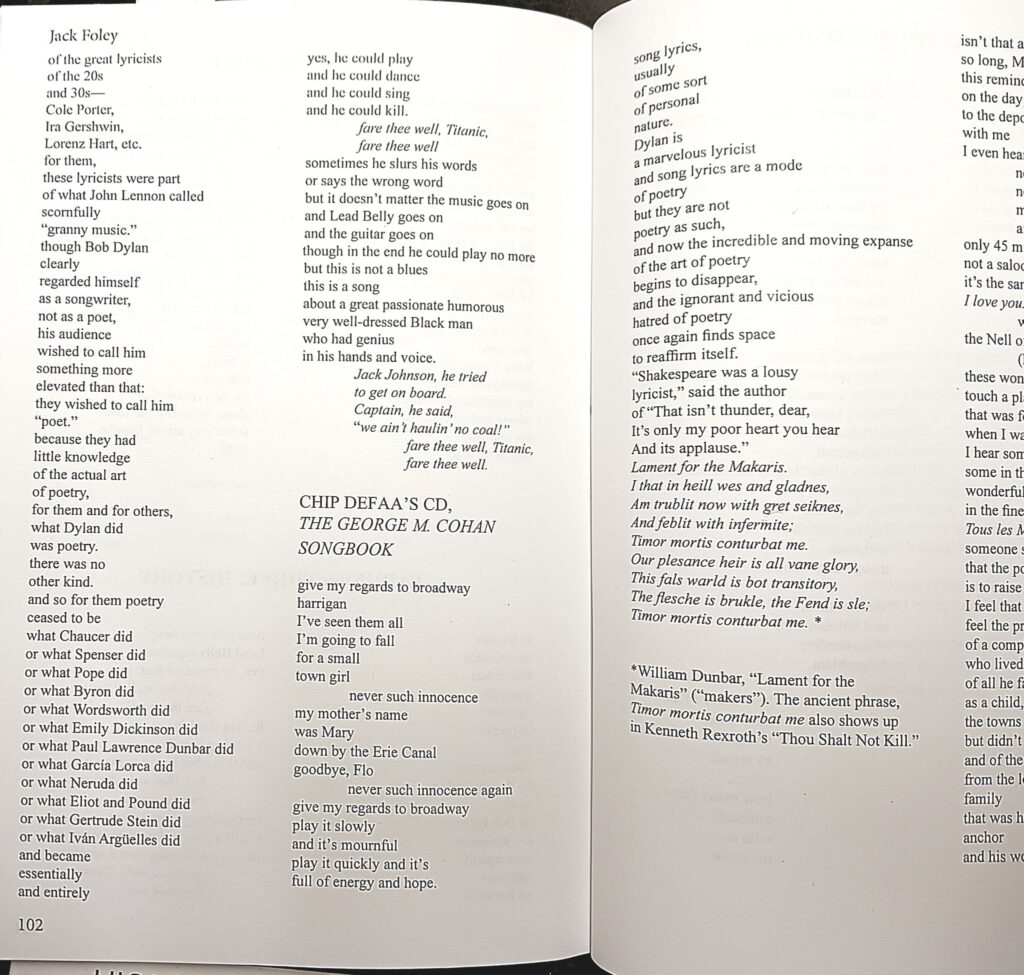
‘Pairings 3: History’ includes a third portion on the right-hand side of the page: CHIP DEFAA’S THE GEORGE M. COHAN SONGBOOK. Here, Foley again demonstrates his deep knowledge of poetry and music.
This is a sweetly complex piece: By the end, we’re unsure whether “he” refers to the narrator’s father, or perhaps George M. Cohan, or Chip Deffaa. It’s a perfect example of the obfuscation which allows readers to come to their own conclusions, in other words insert themselves into the narrative – to try it on, and see how it feels.
It can and will be argued that connection, and thence the need to carry words in memory, is the great ‘why’ for both these debates: we want to carry what we hold dear; a cadence is powerful, a melody even more so. Still, some people learn visually and like to turn the page.
Our Venn diagram of audience has created this rift. The tension remains within the poet, the songwriter, the bookmaker: how best to leave the message intact? Anyone looking to placate the muse may find some gentle guidance within these pages.
What is poetry – is it visual? Aural? This is one of many philosophical points made available for discussion in Creative Death. Whether conversations or academic debate, the questions are here, researched, flayed, sliced thinly and placed on slides for observation. Here are eighty years of creative study, packaged for your convenience.
Foley gives several exemplary art, movie, and music reviews in poetic form. His use of enjambment allows for the reader’s thoughts to free-range through and around a topic, sometimes redirected when he suddenly interjects his own direct opinion.
Is there any better way to learn? I frame that as a question; but no, there is not.
Further listening:
Hear Jack Foley interview poet Allen Ginsberg, October 4th, 1996:
Foley interviews Ginsberg, Part One Foley interviews Ginsberg, Part Two
Hear Jack Foley interview Lawrence Ferlinghetti, April 21st, 1994, at City Lights:
Foley interviews Ferlinghetti, Part One Foley interviews Ferlinghetti, Part Two
